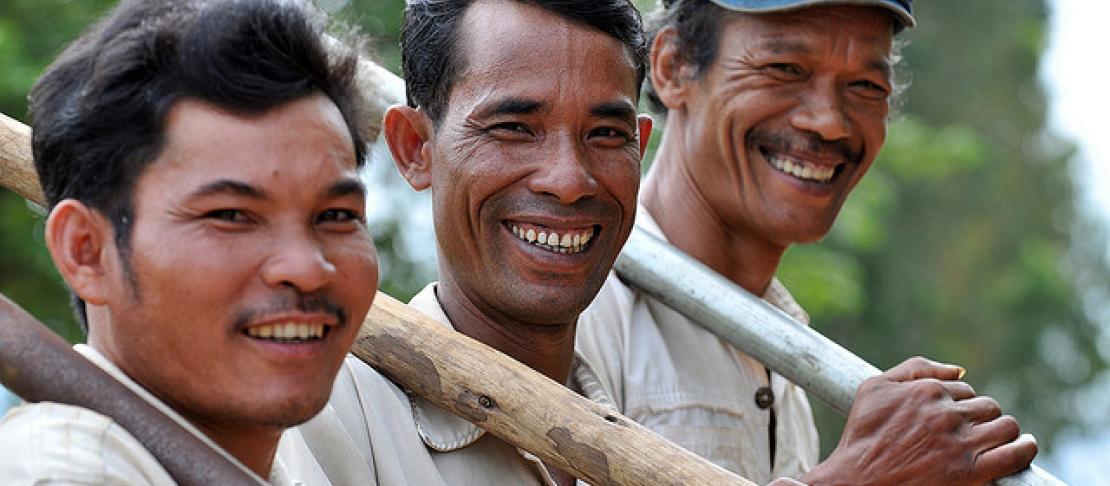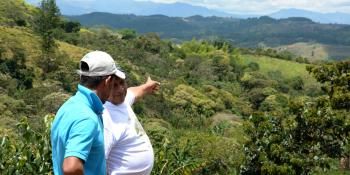Adding quantity and direction to scenarios in South Asia

The impacts of climate change come on top of existing developmental challenges. Extreme weather events, caused by climate change, threaten to push some countries beyond the threshold of their national resilience. This is especially so in South Asia, a region that has been identified as being particularly vulnerable to the impacts of extreme weather events, according to the Special Report on Managing the Risks of Extreme Events and Disasters to Advance Climate Change Adaptation (SREX), released by the Inter-governmental Panel on Climate Change (IPCC) in 2012.
Scenarios are the “what if” questions to which decision makers need answers. They are not predictions but systems thinking that articulate plausible future development pathways in detail. Policy makers need credible, science-based scenarios now about the possible trajectories their countries could take in the future, in order to create climate-resilient societies and economies. These scenarios contain built-in indicators that can send warning signals when situations worsen.
Learn more: about CCAFS' scenarios activities
To create these all important future scenarios, the CCAFS scenarios team, in collaboration with the CCAFS South Asia project team, recently organised a workshop at Nagarkot, Nepal with expert-stakeholders from Bangladesh, India, Nepal, Pakistan and Sri Lanka, as well as international experts. The immediate aim was to develop inputs into the quantification process for the socio-economic scenarios for South Asia.
Linking together multiple indicators from multiple spheres
These socio-economic scenarios can then be incorporated with climate change scenarios and agricultural scenarios to provide a holistic decision making tool for policy makers. This is particularly vital in South Asia, where more than 50% of the population live off agriculture-related sources of income, and the agricultural sector is intricately intertwined with the social, economic, political and environmental spheres.
This workshop marked the second-stage in the development of scenarios first-developed at a workshop in Colombo, Sri Lanka, in November 2012. The overall aim of the on-going process is to develop plausible trajectories that countries could take from the present until 2050. In the Nagarkot workshop, participants developed the logic for change for multiple indicators. They also gave each of the indicators a semi-quantified value for the direction which that change could take – positive or negative – over a two-stage timeline starting from now until 2030, and then from 2030 to 2050.
Science in the face of uncertainty
Scenarios deal with uncertainties. It is because climate science is uncertain that scenarios play such an important role in the decision making process, ensuring that policy decisions are well-informed, even if absolute answers aren't available.
Read more: CCAFS report identifies 'regret-free'approaches in the face of uncertainty
Scientific opinion is still not fully certain about what pattern extreme weather events will take in the coming decades to 2050. This uncertainty sits atop of diverse political, socio-economic and institutional situations in different countries. For instance, the impact of a large flood would be different in Pakistan, India or Bangladesh as the resilience of national societies and institutions in each country vary. In addition, the dynamics of the countries in their relations to other countries in and outside of the region also impact their ability to deal with climate-related events.
A region with a promising future
A region with a highly concentrated population, South Asia is blessed with an abundant natural resource base which runs across national boundaries. Trans-boundary rivers, for instance, run through Nepal, India Bangladesh and Pakistan. The region also has a shared history with strong inter-linkages between societies and economies. All countries are growing economically; however some economies are developing more rapidly than others. The region is also moving towards a period of political stability, with both Sri Lanka and Nepal having come out of civil wars.
Visit our South Asia regional page to find out more about CCAFS' work in the region
Considering that there is reasonable economic growth and political stability at present, the scenarios developed by the stakeholder group looked at plausible developments into the future – up to 2030 and 2050. The drivers (the factors that can change the scenarios) considered were human capital (knowledge, information and education); governance and institutions; science, technology and innovation; political stability and conflict; economic structure; and demographic profile.
The best-case scenario was one with high human capital; good governance and institutions; effective transfer of science, technology and innovation; political stability within countries and in the region; economic growth driven by the manufacturing and services sector; and low population growth. The worst-case scenario has all these drivers in the negative. There are also three other scenarios that lie in between.
The importance of institutions
One conclusion was universal across all scenarios: if institutions remain stable, South Asia has reasonable resilience to deal with climate change impact. The impact of good governance and effective political, social and economic institutions can account for as much as 2% of GDP growth.
Going forward, CCAFS will merge the socio-economic scenarios with the IPCC’s climate change scenarios to develop robust scenarios for policy makers in the region. The consolidated scenarios will help guide public decision-making for improved future food security, environments and livelihoods. They will also be useful for private decision-makers to target investments, and research and development areas. The scenarios will also provide indicators, enabling decision makers to judge whether development trajectories are deviating from the desired track.
The scenarios will help the agriculture sector (and through it, national and regional economies) to cope with short-term climate variability, adapt to long-term climate change and to make decisions that will help mitigate the emission of greenhouse gases.
Visit our Scenarios home-page here.
This story was written by guest blogger S. Gopikrishna Warrier, who is a regional environment manager with Panos South Asia and was a participant at the workshop. The article is an opinion piece from Mr. Warrier. It was first published in the Hindu Business Line newspaper.



